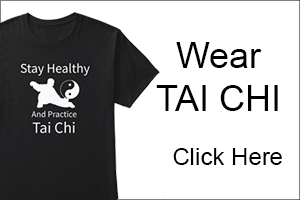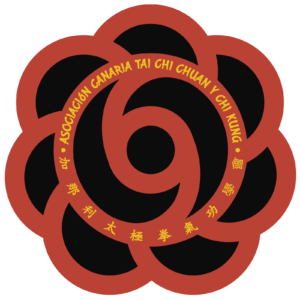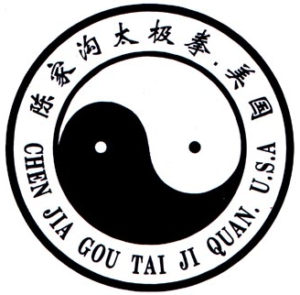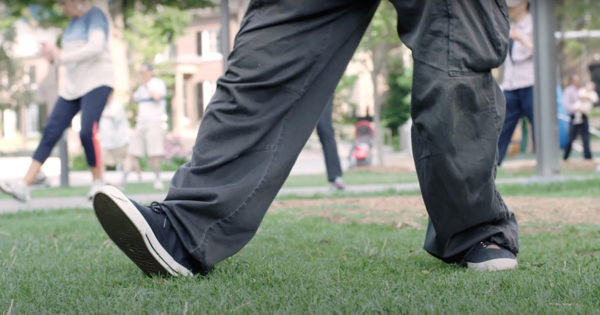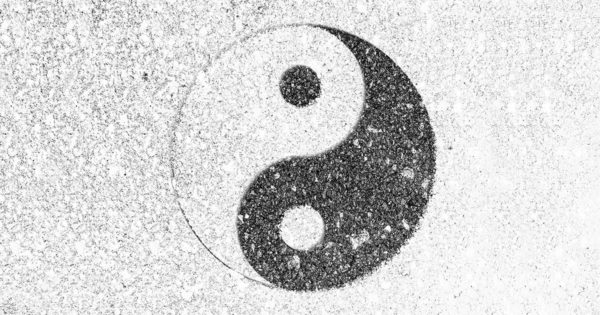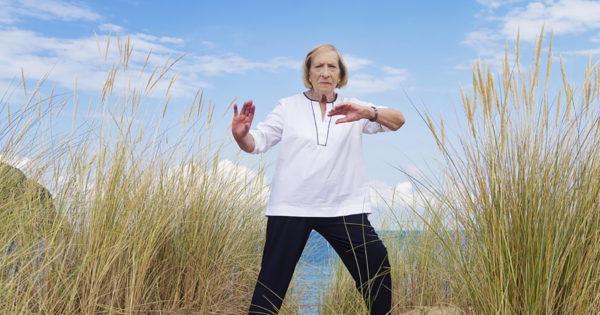Slanted FlyingJournal of Tai Chi Chuan
Training
Taijiquan’s Pressing (按 An) and Squeezing (挤 Ji) (Attacking an Opponent’s Defensive Sphere)
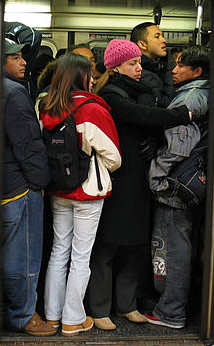 Getting on a crowded bus or train can also be used to illustrate an and ji. Pushing against someone to move them out of the way and make room for yourself would be like using an, whereas squeezing yourself in-between other passengers to displace them enough to make room for yourself would be like using ji.
Getting on a crowded bus or train can also be used to illustrate an and ji. Pushing against someone to move them out of the way and make room for yourself would be like using an, whereas squeezing yourself in-between other passengers to displace them enough to make room for yourself would be like using ji.
Pushing someone away would be better described by using the term tui (推 push), the same character that is used in tui shou (推手 push-hands), rather than an. An is more like pressing one’s mass/weight against the partner/opponent than it is pushing them away from one’s body.
An is the term that would be used to describe pressing an elevator button, or pushing ones hands against the deck of a pool when lifting oneself out. These uses describe a person pressing their mass against something, not pushing something away from them (which would be tui).
Note that some practitioners ascribe a downward direction to an, but I think that an can be applied in any direction. While pressing the deck of a pool illustrated downward an, pressing an elevator button uses horizontal/forward an.
The reason an is often expressed downward is that we typically express it with our arms, and using our mass against someone is easiest in this direction since it is the same direction as the force of gravity. If one is above the recipient, then an is easy to apply since gravity makes one feel heavy without one having to exert much effort to produce the pressure.
But rather than being one directional using zhong (重) heaviness, we want instead to use chen (沉) heaviness to be multidirectional like a ball sinking/submerging into water that also experiences the upward quality from its buoyancy. We want a heaviness that is capable of changing (alive and responsive) rather than the heaviness of a boulder that sacrifices mobility and quickness.
Heaviness with mobility and quickness, like most of Taijiquan as I understand it, is finding the appropriate balance of yin with yang. Assigning strictly a downward direction to an tends to diminish the yin/yang balance that is desired.
Note that chen heaviness is the same term used to indicate sinking of the elbows. This sinking is energetic and does not drop our elbows directly below our shoulders with our elbows touching our sides. There remains an upward quality to the sinking elbows such that there remains space in the armpit. The elbows are allowed to raise higher as long as there remains a sinking quality. This sinking heaviness is similar to what is used for pressuring a partner/opponent using an.
An is not about launching one’s mass and crashing into the partner/opponent; one needs to maintain central equilibrium (中定 zhongding) while applying an. An is more about pressure rather than it is about momentum, although momentum can be added (through either stepping forward and/or through extending the arms, for example) for a “finishing” technique.
The tui/push in push-hands is a safe way to demonstrate control of a partner during training. The an and ji jin (勁 refined power) explained in this article are more about the control of the partner/opponent rather than the finishing technique used during a fight against an opponent. Once a partner or opponent is under one’s control, then they can be either safely pushed away, or they can be subjected to more damaging techniques, like strikes, throws, breaks, etc.
Some schools divide interactions into three stages. Hua (化 neutralize) protects oneself from attacks and na (拿 seizing) controls the partner/opponent and creates openings for counterattacks. Both hua and na use the trained jin of the thirteen energies/techniques. Da (打 strike or attack), or fa (发 release or attack), is any finishing technique. The trained jin of Taijiquan can often be used for finishing by following through with the technique, but most of our training, like during push-hands, emphasizes the neutralization and control rather than the finishing.
Note that some schools include additional stages, for example including listening (听 ting) or luring (引 yin), etc. For this article, three stages should suffice since I am focusing here on the difference between da and the earlier stages (whether or not listening, luring, etc. are included).
Da shou (打手 striking hands) is used in some schools rather than tui shou, and indicates a greater emphasis on including martial finishing techniques in their training. Both practices use the same thirteen energies/techniques; the difference is in the martial emphasis. Tui shou training typically emphasizes sensitivity and control whereas da shou uses these for fighting by including finishing techniques (e.g., strikes, locks and throws).
The thirteen energies/techniques are done during stick and adhere, connect and follow (zhan nian lian sui 粘黏連隨). The finishing attacks are instead concerned with damaging an opponent, and can result in separating from them. For example, fajin (發勁 refined releasing or launching power) is often used in finishing techniques, but it is not included in the thirteen energies/techniques because it occurs at the end of the stick and adhere, connect and follow portion of the interaction, and often is intended to end the from-contact interaction.
To summarize this article, press energy (an jin) applies one’s mass against whatever surface structure the partner/opponent presents, whatever shape that happens to be (i.e., attacking through their structural supports). Squeeze energy (ji jin) wedges into the gaps or weak spaces within that partner/opponent’s structure (i.e., breaking their structural supports).

